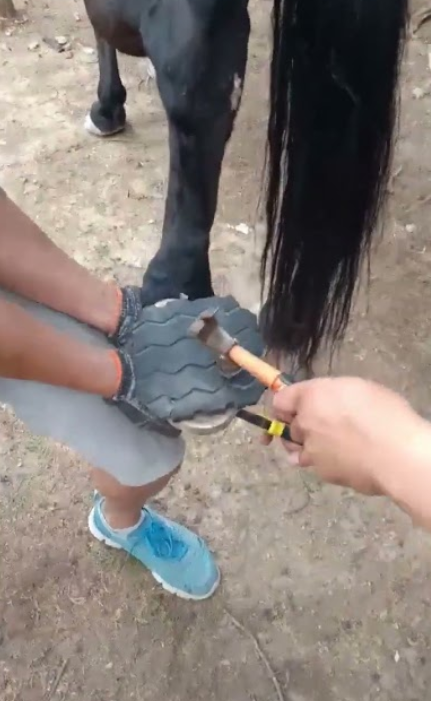Installing horseshoes is an essential aspect of equine care, ensuring that horses maintain optimal foot health while preventing injury from hard or rocky ground. Among the various tools used to secure a horse’s shoe, the horseshoe nails are vital components. The process of installing a horseshoe using these nails requires skill and precision, as it directly impacts the horse’s comfort and movement. This article will walk you through the steps involved in the installation of a horseshoe, focusing specifically on the proper use of mane horseshoe nails.
Understanding Horseshoe Nails
Horseshoe nails are specialized nails used in farriery to secure horseshoes to a horse’s hooves. These nails have a distinct shape, with a flat head and a tapered shaft, which are designed to prevent them from pulling through the hoof wall while ensuring the shoe stays in place. Mane horseshoe nails are typically used in certain breeds with different hoof structures or for specific shoe types.
Preparation
Before installing the horseshoe, it is essential to prepare the horse’s hooves. This includes cleaning the hooves to remove dirt, debris, and old shoes, as well as trimming the hooves to the correct shape. A hoof rasp is often used to smooth the hoof wall, while a hoof knife is employed to clear out any loose material from the hoof’s sole and frog. These preparations ensure that the shoe will fit properly and that the hoof will remain healthy after the shoeing process.
Selecting the Right Horseshoe
Choosing the appropriate horseshoe is critical. Horseshoes come in various sizes and types, depending on the horse’s breed, activity level, and specific hoof needs. Mane horseshoe nails, in particular, may be used for specific shoe types, such as those designed for performance horses or horses with unique hoof angles. It’s important to match the size and shape of the horseshoe to the horse’s hoof to avoid discomfort or improper fitting.
Placing the Horseshoe
Once the hoof is properly prepared, the horseshoe is placed onto the hoof in the correct position. This is where the installation process begins. The farrier will position the shoe so that it follows the natural shape of the hoof, ensuring it is aligned properly. The shoe should cover the entire hoof but leave space around the frog to allow for natural hoof expansion.
Nail Installation
At this point, the farrier begins to drive the horseshoe nails into the hoof wall to secure the shoe. With a hammer and specialized farrier tools, the nails are inserted at the appropriate angle and driven gently but firmly into the hoof. The nails are placed near the edge of the hoof wall, avoiding any sensitive areas inside the hoof. The farrier ensures that the nails are not too deep, as this could cause discomfort or damage to the hoof structure.
For mane horseshoe nails, the farrier might use a specific type of nail to account for a particular angle or curvature of the horse’s hoof. The nails are driven in at a slight slant, allowing them to hold the shoe securely in place while also being easy to remove if needed.
Clipping the Nails
Once the nails are driven through the hoof wall and into the horseshoe, they are clipped to the appropriate length. This step ensures that no nails are left sticking out, which could cause injury to the horse or the person handling the horse. The farrier uses special nippers to cut the nails flush with the hoof wall, leaving just enough length to be bent over securely.
Bending the Nails
The final step in securing the horseshoe is bending the ends of the nails over the hoof. This is done using a tool called a clinching tool, which allows the farrier to bend the exposed nail tips inwards, locking them into place against the hoof wall. The bent nails ensure that the horseshoe stays in place, providing the necessary protection to the horse’s hooves.
Final Check
After the horseshoe is installed, the farrier will check the alignment and tightness of the nails. They ensure that the shoe is not too tight or loose, as either condition could cause discomfort or affect the horse’s gait. A final inspection ensures the horse’s safety and comfort, with the horseshoe properly installed and the nails securely in place.
Conclusion
Installing a horseshoe using mane horseshoe nails requires a combination of experience, precision, and the right tools. The process ensures the horse’s hooves are protected from external damage, helping maintain mobility and overall health. By following the correct installation procedure, farriers can ensure that the horse remains comfortable and well-supported throughout its daily activities.
